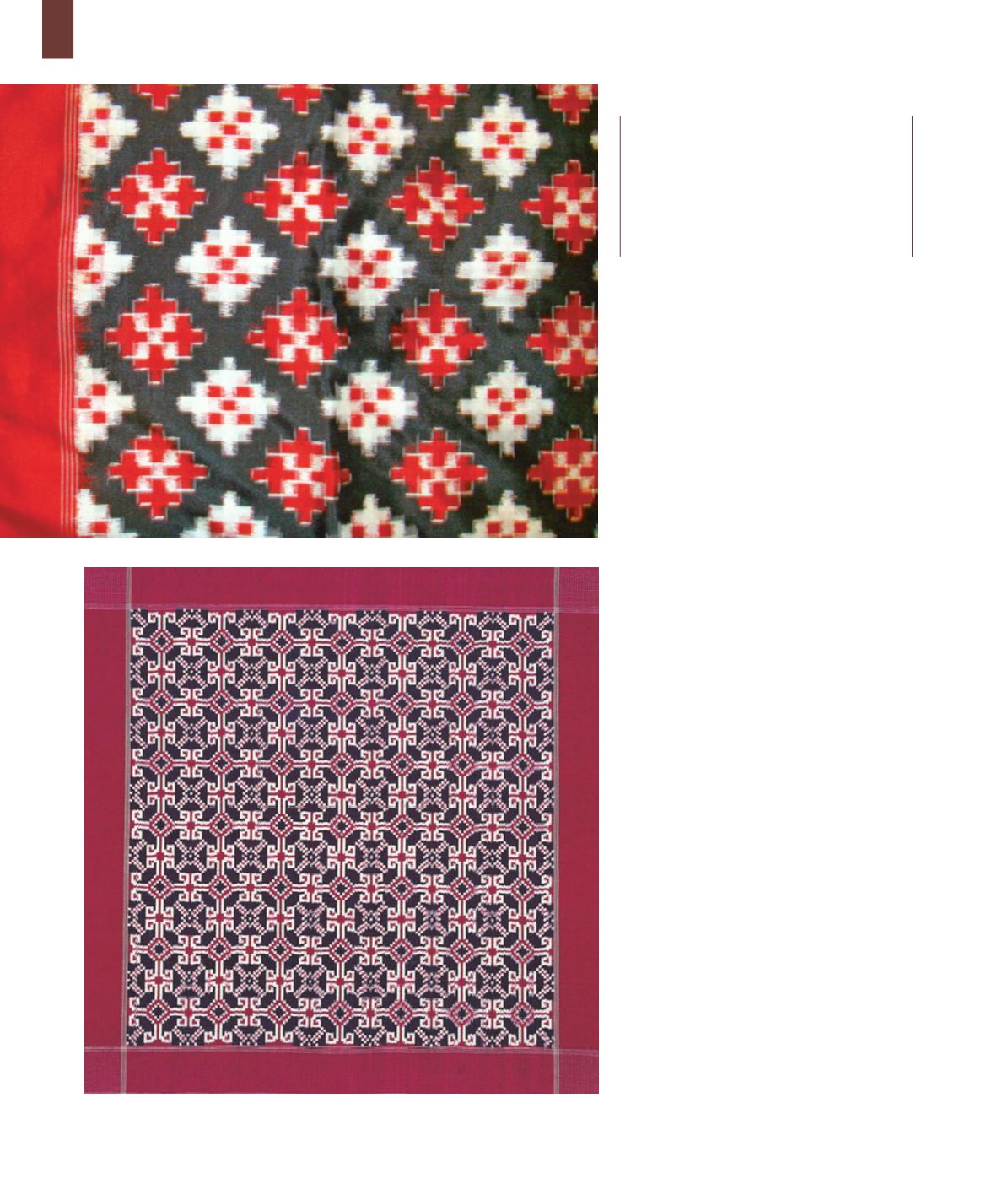
60
The unique feature of the Telia Rumal is that
when it is worn as a turban in the summer it
keeps the head cool and when worn as a turban
in the winter it keeps the head warm. Another
unique feature is that when worn as a lungi by
fishermen the smell of the fabric attracts fish
while the nature of the fabric keeps the salt
water away from the fabric so the lungi does
not get wet and become uncomfortable for
the wearer.
Telia Rumals were traditionally woven at
Chirala, Andhra Pradesh, however the
production in the handloom cluster ceased
possibly sometime in the 20th century. It
was woven in a primitive way in my village
Puttapaka, Nalgonda district, Telangana. I had
heard of its original beauty that stemmed from
its attractive colour combination of white, red
and black yarns, and the array of motifs and
geometric patterns that featured on it, and was
very keen to learn more about it.
However, the likelihood of learning to weave,
this seemed impossible for me. I came from
a very poor weaver’s family specialising in
Ikat handloom weaving, living in Puttapaka.
We were five brothers and three sisters. I am
the third son. As my father’s meagre earnings
were inadequate to sustain the family, my
two elder brothers and I got involved in the
family handloom weaving activity. When
I saw children from rich families going to
school, I used to wonder if I would ever get
an opportunity to study and go to school.
Thankfully, seeing the predicament of children
like me, an elder in our community started a
night school and I could thus study till
class five.
The unique feature of the Telia
Rumal is that when it is worn
as a turban in the summer it
keeps the head cool and when
worn as a turban in the winter
it keeps the head warm.


